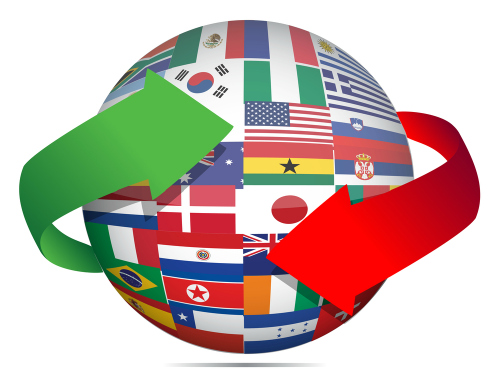Recent Advances in Toll-Free Phone Numbers
Toll-free dialing has been around since 1967, but today there are a wide range of benefits that make toll-free numbers a key business tool. While the original 1-800+ prefix lasted 30 years before its 7.8 million numbers were used up, today toll-free area codes are being used up at an increasingly rapid rate thanks to advances in telecom technology that make these numbers incredibly helpful for businesses.
In the past, the key benefit of a toll-free number was that a customer could call from anywhere in the country, without paying extra, and access your product or service. While this was helpful, it was also very limited in scope.
Today, multiple options are available for routing incoming calls to businesses, ranging from Time-of-Day (TOD) routing to converting toll-free calls to incoming VOIP calls to transfer them to local numbers. All of these options help businesses handle customer calls more efficiently and effectively than ever before.
The Benefits of Toll-Free Dialing

Expanding the Reach of Small Businesses
When toll-free numbers were first introduced, the pricing structure was fixed and prohibitively expensive for anyone but high-volume users. This put local businesses at a disadvantage, as they could not use toll-free dialing to expand their customer base into neighboring areas.
Today, however, toll-free calls can be routed anywhere, and billing is based on a record of per-minute incoming calls rather than a flat rate. This allows small businesses affordable access to toll-free numbers, allowing them to expand their reach across the country at a fraction of the cost of opening additional stores.
Falling Rates due to Competition
With the implementation in 1993 of toll-free number portability, a toll-free number no longer tied a company to a particular carrier. As a result, companies can take their toll-free numbers with them to any carrier that offers better rates. Today, many large users are able to purchase toll-free services for two cents per minute or less. As competition continues and telephone companies work to gain customers, more features and services will be available at lower and lower prices.
‘Vanity’ Numbers for Memorability
Vanity numbers, such as 1-800-FLOWERS, allow businesses to have toll-free numbers that customers can easily remember. In the same way that a memorable website address drives traffic, a custom toll-free number can help a business be the first choice in a customer’s mind for a particular product or service. A vanity number can help a business with both branding and getting a better response from advertising.
Large Variety of Customizable Routing Options
A business using a toll-free number wants to make sure they know where their customers are calling from and also needs to control where each call goes. With current advances in telecommunications, a large variety of options are available, ranging from simple to complex. A business can choose the services they need and set up their telephone system in a way that is completely unique to them. Here are just a few of the available toll-free options.
- Time-of-Day (TOD) is a simple routing allows a business to route a call to a different destination depending on what time the call comes in. This is very helpful for businesses whose centers are not all open 24 hours a day. A center on the east coast could answer earlier calls and a center on the west coast could answer the later calls, no matter where the call originated. A single center that was open overnight could give 24-7 service coverage, which could be a big selling point for a business.
- Day-of-Week (DOW) or Day-of-Year (DOY) is another simple routing that allows certain destinations on certain days of the week or year. This can allow a business to offer holiday or weekend service anywhere in the country with only one center open that day.
- Area Code Routing is a feature favored by companies that offer state-specific or region-specific services. This feature allows a company to route calls to certain locations based on where the caller is dialing from, allowing more efficient service with fewer transfers. In addition, area code routing can allow a company to reduce their phone rates by having certain callers answered by out-of-state centers if interstate rates are less expensive.
- Dynamic Network Routing (DNR) allows calls to be segmented and routed call-by-call to receiving agents who have certain skills, or using business-defined rules to route callers to an IVR or other system.
- Direct Toll Free Service allows a business to offer toll-free service internationally with the same number your currently use in the United States. Another similar service that is available is International Toll Free Numbers, which enables a company to provide international callers a toll-free number in their own nation that will route to the U.S. office or call center of the business.
- Global Inbound Service permits a company to distribute calls to a variety of centers throughout the world. This is similar toPercentage Allocation Routing within the U.S., but with a global focus for businesses who have customers and offices around the world.
- IP-based Services let a company take advantage of an IP-based telephone system such as Voice over Internet Protocol (VoIP). Using a VoIP system can reduce costs while still allowing the segmentation and reporting of incoming calls that a traditional phone routing system provides.
The ultimate benefit of having a toll-free number is that the options are totally customizable. Not only can it extend your reach nationwide and help customers remember how to reach you, you can understand your customer base by using the increasingly sophisticated tracking and routing options available. Each business can contact various providers and find the services they need at a price they can afford. Ultimately, a business using toll-free dialing is making it easy for customers to reach them and easy for the business to understand their client base, which are keys to business success.